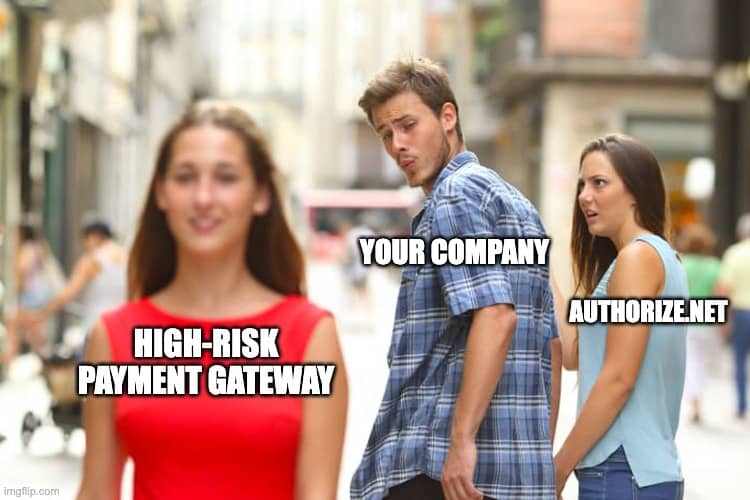<strong>ACH Reason Codes: R66 Return of XCK Entry </strong>

As an ACH financial institution, you’re likely already familiar with ACH return reason code R66. This code is used when a financial institution refuses to process an electronic payment due to a “change in circumstances” with the originator or receiver. In this guide, we’ll explain what this code is, why XCK entries are returned, the return process for XCK entries, steps to take when returning an XCK entry, and the regulations and requirements surrounding ACH return reason code R66. We’ll also provide you with resources to help you better understand ACH reason code R66 and tips on how to avoid returning XCK entries in the future.
Table of contents
- What is the ACH Reason Code R66?
- Reasons for Returning XCK Entries
- The Return Process for XCK Entries
- Steps to Take When Returning an XCK Entry
- Regulations Surrounding ACH Return Reason Code R66
- What Information is Required for an XCK Return?
- How to Avoid Returning XCK Entries
- Benefits of Understanding ACH Return Reason Code R66
- Resources to Help Understand ACH Reason Code R66
- Conclusion
What is the ACH Reason Code R66?
The ACH return reason code R66 is an automated clearinghouse (ACH) return code used by ACH financial institutions when they decline to process an electronic payment due to a “change in circumstances” with the originator or receiver. This code is also known as “Change in Circumstances,” “R66 – Change in Circumstances,” and “XCK-Change in Circumstances.”
The ACH return reason code R66 is defined by the National Automated Clearing House Association (NACHA) as a code used when a financial institution refuses to process an electronic payment due to a “change in circumstances” with the originator or receiver. The “change in circumstances” can be anything from the originator changing their account number to the receiver not having the funds to cover the payment.
Reasons for Returning XCK Entries
When it comes to an understanding the ACH reason code R66, it’s important to understand the reasons why XCK entries are returned. There are several reasons why a financial institution may choose to return an XCK entry.
One of the most common reasons for returning an XCK entry is when there has been a change in the circumstances of the originator or receiver of the payment. This could include a change in the originator’s account number, the receiver’s address, or the receiver’s bank routing number.
Another common reason for returning an XCK entry is when there is insufficient funds in the originator’s account to cover the payment. This could be due to the originator not having enough money in their account to cover the payment, or the account not having the proper authorization.
Finally, a financial institution may return an XCK entry if the originator or receiver still needs to provide the necessary documentation or information to process the payment. This could include the originator not providing their bank account information or the receiver needing to provide the required authorization.
The Return Process for XCK Entries
When understanding the ACH reason code R66, it’s also essential to understand the return process for XCK entries. The return process for XCK entries is relatively straightforward and should be followed carefully to ensure compliance with NACHA regulations.
The first step in the return process for XCK entries is for the financial institution to send an ACH return notification to the originator or receiver. This notification should include the ACH return reason code R66 and the specific reason for the return.
Once the originator or receiver has been notified, they will have a certain amount of time to respond to the notification and provide the documentation or information required to process the payment. If the originator or receiver fails to respond within the allotted time frame, the financial institution may choose to return the XCK entry.
If the originator or receiver responds to the notification, the financial institution will review the provided documentation or information. If the documentation or information is satisfactory, the financial institution can proceed to process the payment. If the documentation or information is unsatisfactory, the financial institution may choose to return the XCK entry.
Steps to Take When Returning an XCK Entry
If a financial institution chooses to return an XCK entry, certain steps must be taken to ensure compliance with NACHA regulations.
The first step is to notify the originator or receiver of the return. This should include the ACH return reason code R66 and the specific reason for the return.
The second step is to return the XCK entry to the originator or receiver. This should be done as soon as possible after the notification.
Finally, the financial institution should keep a record of the return. This includes the ACH return reason code R66, as well as any additional information that was provided by the originator or receiver. This information should be kept on file for at least five years.
Regulations Surrounding ACH Return Reason Code R66
When understanding the ACH reason code R66, it’s important to understand the regulations and requirements surrounding this code.
The primary regulation surrounding ACH return reason code R66 is NACHA Rule 2.10. This rule states that all returns must include the ACH return reason code R66. The return must also include the specific reason for the return, such as a change in the originator’s account number or the receiver not having the funds to cover the payment.
In addition to NACHA Rule 2.10, financial institutions must comply with the Electronic Funds Transfer Act (EFTA), which outlines the rights and responsibilities of financial institutions and customers regarding electronic payments.
What Information is Required for an XCK Return?
When it comes to understanding the ACH reason code R66, it’s important to understand what information is required for an XCK return.
The information required for an XCK return includes the ACH return reason code R66 and the specific reason for the return. This could include a change in the originator’s account number, the receiver’s address, or the receiver not having the funds to cover the payment.
In addition to the ACH return reason code R66, financial institutions must also provide the originator or receiver with the necessary documentation or information to process the payment. This could include the originator’s bank account information, the receiver’s authorization, or the originator’s authorization.
How to Avoid Returning XCK Entries
When understanding the ACH reason code R66, it’s important to understand how to avoid returning XCK entries. There are several steps that financial institutions can take to avoid returning XCK entries in the future.
The first step is to ensure that all payments are properly authorized. This includes ensuring that the originator has the necessary funds in their account to cover the payment and that the originator or receiver has provided the documentation or information required to process the payment.
The second step is to double-check all payments before processing them. This means double-checking the originator’s account number, the receiver’s address, and the receiver’s bank routing number. It also means double-checking the originator’s authorization, the receiver’s authorization, and any other necessary documentation or information.
The third step is to keep all records of payments on file. This includes the ACH return reason code R66 and any additional information provided by the originator or receiver. This information should be kept on file for at least five years.
Benefits of Understanding ACH Return Reason Code R66
When understanding the ACH reason code R66, it’s important to understand the benefits of understanding this code.
One of the main benefits of understanding ACH return reason code R66 is that it enables financial institutions to process electronic payments properly. By understanding the code, financial institutions can ensure that all returns are adequately documented and that the return process is followed correctly.
Another benefit of understanding ACH return reason code R66 is that it helps to ensure compliance with NACHA regulations. By understanding the code, financial institutions can ensure that they are operating in compliance with the Electronic Funds Transfer Act (EFTA) and NACHA Rule 2.10.
Finally, understanding ACH return reason code R66 helps to ensure the safety and security of both the originator and receiver of the payment. By understanding the code, financial institutions can ensure that all payments are properly authorized and that the originator or receiver has the necessary funds in their account to cover the payment.
Resources to Help Understand ACH Reason Code R66
When it comes to an understanding the ACH reason code R66, it’s important to have access to the right resources. There are several resources available to help financial institutions better understand this code.
One of the best resources for understanding ACH return reason code R66 is the NACHA website. This website provides detailed information about the code and its regulations and requirements.
In addition to the NACHA website, financial institutions can also refer to the Electronic Funds Transfer Act (EFTA) for more information about the rights and responsibilities of both financial institutions and customers when it comes to electronic payments.
Finally, financial institutions can refer to the ACH Operator’s Guide for more information about ACH return reason code R66. This guide is provided by the National Automated Clearing House Association (NACHA) and provides detailed information about the code and the return process for XCK entries.
Conclusion
Understanding the ACH reason code R66 is essential for financial institutions that process electronic payments. This code is used when a financial institution refuses to process an electronic payment due to a “change in circumstances” with the originator or receiver. In this guide, we’ve explained what this code is, why XCK entries are returned, the return process for XCK entries, steps to take when returning an XCK entry, and the regulations and requirements surrounding ACH return reason code R66. We’ve also provided you with resources to help you better understand ACH reason code R66 and tips on how to avoid returning XCK entries in the future.
Returning XCK entries can be challenging, but understanding the ACH reason code R66 is essential for financial institutions that process electronic payments. By understanding this code, financial institutions can ensure that all returns are properly documented and the return process is followed correctly. They can also ensure compliance with NACHA regulations, the Electronic Funds Transfer Act (EFTA), and the safety and security of the originator and receiver of the payment.
If you have any questions about ACH return reason code R66, or would like more information, please get in touch with us. We’re always happy to help!
Read Next

Find out whether Authorize.Net works for high risk merchants, what restrictions you might face and how to get approved.

Get expert advice on selling CBD products on Shopify, including compliance tips and setting up secure payment options.

Find out why Square may deactivate merchant accounts and steps to resolve issues and maintain uninterrupted payment services.
Need a High-Risk Merchant Account?
Disruption-free payment processing at the best price for your situation, guaranteed.
Get Free Guidance Now!